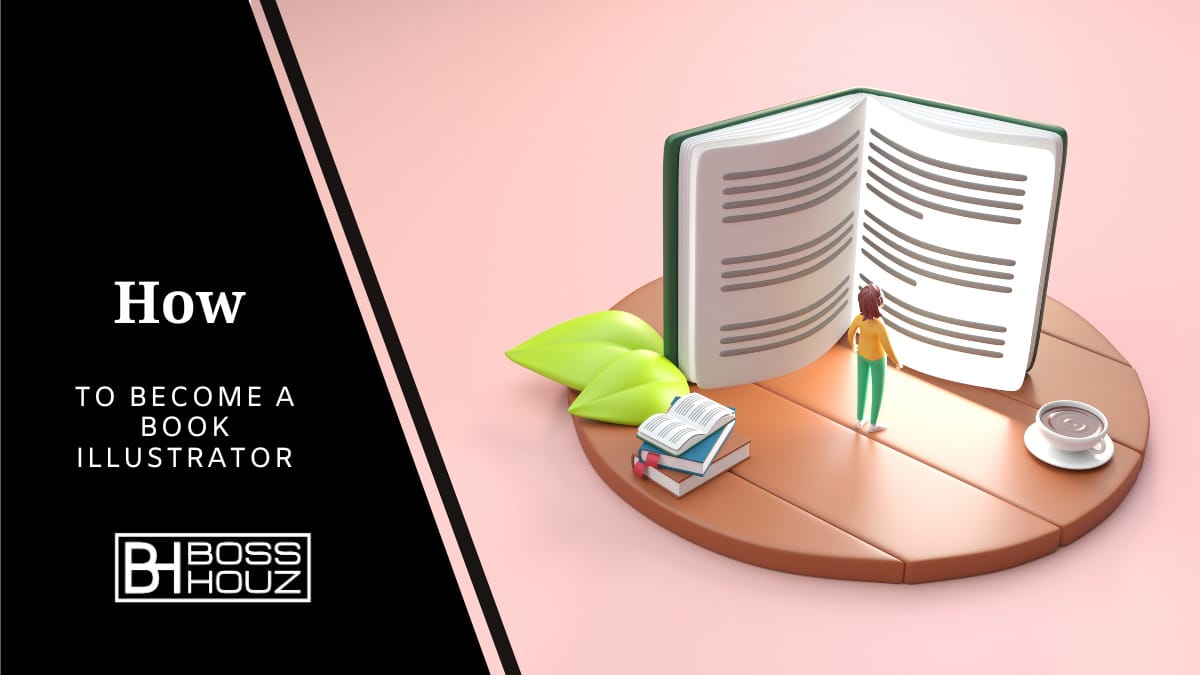Have you ever gazed in wonder at the captivating illustrations in your favorite storybooks? As an entrepreneur and business owner, you likely appreciate the power of visual storytelling and its ability to connect with audiences. This comprehensive guide will unveil the artistic journey to become a professional book illustrator.
From honing your creative skills to building an impressive portfolio, this article provides industry insights to help you thrive in the flourishing world of book illustration. Follow this roadmap to begin manifesting your illustrative aspirations into a rewarding and sustainable career.
Table of Contents
The Enchanting Realm of Book Illustration
Before diving into the practical steps, it is essential to understand this diverse and dynamic industry. Book illustration encompasses a vast range of genres, styles, and age groups. From colorful children’s books to graphic novels and more, expert illustrators bring stories to life through impactful imagery.
As technology continues to dominate our attention spans, high-quality illustration is increasingly valued for its ability to resonate deeply with readers. Whether transporting children into whimsical realms or adding immersive visuals to complex adult narratives, book illustrators play a profound role in storytelling.
However, to become successful in this competitive sphere, one must specialize according to personal strengths and interests. For instance, illustrating for children requires a playful imagination, while graphic narratives demand structural aptitude. That said, developing versatility across genres can also be advantageous.
Book illustration is a multifaceted industry with ever-evolving trends. As an aspiring professional, staying ahead of stylistic shifts through continuous practice is key. Ultimately, the most enduring illustrations emanate from a profound understanding of the human condition.


Crafting an Outstanding Portfolio
Your portfolio is essentially an artistic résumé showcasing your distinctive sensibilities and technical skills. A thoughtfully curated selection of 10-15 illustrations that embody your strengths is recommended. While specializing in a particular style is advised, displaying diversity also has merit.
Children’s book portfolios could highlight imaginative characters and settings. For graphic narratives, include samples of panel layouts, sequential flow, and impactful compositions. Portfolios for chapter books require illustrations that complement the overarching style and mood.
Along with prints and drawings, include digital images with captions describing the rationale behind each piece. As technology continues to transform the publishing landscape, digital portfolios are gaining prominence. Leveraging online creative platforms to showcase your artistic brand can generate exposure.
Above all, your portfolio must demonstrate profound engagement with the medium and the ability to meet a publisher’s vision. Strike a balance between showcasing your unique voice while aligning with specific genre expectations.
Discovering Your Distinctive Style
Your illustrative style is akin to your artistic fingerprint, setting you apart from the crowd. However, developing a distinctive style requires time, experimentation, and contemplation. Begin by being inspired by art and stories you are instinctively drawn towards.
Immerse yourself in these preferred genres by continuously practicing foundational skills like composition, color, and linework. Pay attention to recurring themes, palettes, and techniques that emerge organically without conscious effort. Such intuitions likely point towards your inherent strengths.
Refine this raw inspiration into a cohesive stylistic direction. Analyze the illustrations you are most proud of and identify common threads that underlie them. Isolate these tendencies and consciously strengthen them through dedicated practice. Gradually a distinctive style will crystallize.
While some argue that adapting to market expectations leads to more success, staying authentic ultimately prevails. Your style must communicate a unique visual language that publishers recognize as intrinsically yours. The most prudent course is letting your natural sensibilities guide you.
As illustration styles continue diversifying in exciting new directions, developing a timeless aesthetic with singularity and nuance is advised. Master the fundamentals while nurturing your innate capacities for innovation.
Education: The Role of Formal Training
Aspiring book illustrators essentially have two educational routes- specialized art institutions or self-teaching. For foundational training, accredited illustration programs provide comprehensive guidance. However, with determination and wise resources, the self-taught path bears fruit as well.
Reputed art schools like Falmouth University in the UK offer book illustration degrees spanning graphic narratives, children’s illustration, and more. Such structured education builds strong portfolios and connections. Alternatively, online illustration courses are gaining traction for their flexibility.
But underscoring natural talent with passion and practice can also prepare you for this career. Established illustrators like Oliver Jeffers, Beatrix Potter, and Maurice Sendak were self-taught, mastering their craft through observation and perseverance.
Ultimately, there are no rigid prerequisites for entering book illustration. Yourportfolio quality supersedes qualifications. Develop knowledge of composition, linework, and color theory through either route. Consistent skills upgrade is vital for thriving in this competitive sphere.
Navigating the Publishing Industry
Breaking into the publishing industry as an illustrator involves actively putting yourself and your work in front of art directors, editors, and agents. However, securing contracts is a gradual process requiring persistence.
Start by thoroughly researching publishers who produce books relevant to your strengths and interests. Follow submission guidelines while highlighting your distinctive voice rather than conforming to the existing style. Patience is key as review cycles can take months.
Simultaneously, expand your online presence through social media groups and illustration platforms. Promote your work and engage with industry conversations to progressively build credibility. While directly approaching publishers is advisable, securing representation from a reputed agent can be advantageous as well.
In general, persistence in submitting proposals and illustrations according to publisher needs is essential. As your portfolio evolves, continuously assess where your style fits into the publishing landscape. Staying versatile without compromising uniqueness also opens more doors over time.
Financial Realities of Book Illustration
Understanding the earning potential in this career path is vital when turning illustration into a sustainable profession. Most book illustrators charge flat project fees or royalties on book sales, or a combination of both. Income stability varies, relying heavily on commissioned work.
Research industry standards for illustration costs based on the publisher, project scale, and your experience level. Expect fees around $1000 to $3000 for children’s books and $5000 to $15,000 for graphic novels. Additional royalties from book sales provide supplementary earnings.
Charging flat fees per illustration along with appropriate royalties gives financial security in case of low book sales. Ensure your rates account for concept design, revisions, and usage rights. As you gain experience, progressively increase your fees.
Diversify income by promoting your illustration skills beyond books as well, like merchandise designs. Financial sustainability as an illustrator results from diligently managing rates, contracts, usage rights and developing versatility. Remain inspired by the joy of storytelling through art.


The Agent Question: To Have or Not to Have
Do you need a literary agent to make it as an illustrator? While beneficial, it is not a hard prerequisite. Agents facilitate lucrative contracts, negotiate better royalties, and offer access to publishers. However, securing an agent itself requires effort and persistence.
Perform in-depth research to find agents passionate about illustration. Send compelling work samples that highlight your unique talents. Book projects aligned to the agent’s interests have higher chances. You could also seek referrals from professional acquaintances.
Alternatively, you can directly approach publishers once your portfolio matures. Many renowned illustrators bypassed agents through relentless self-promotion. Consistently engage with your audience on social media and creative platforms to stay visible.
Overall, aligning with the right agent can accelerate your publishing contracts. But staying patient and building a compelling portfolio while continuously pitching your work directly is just as fruitful. Evaluate your needs and priorities to decide on the best course.
Maximizing Visibility as an Illustrator
Gaining recognition as an illustrator involves strategically increasing engagement with your target audience. Create social media profiles highlighting your artistic brand through interviews, videos, and behind-the-scenes content. Guest blog posts for prominent publishers also provide valuable exposure.
Stay actively involved in illustration platforms showcasing your diverse work and creative process. Collaborating with writers and other artists breeds new opportunities. Promoting your publication-ready portfolio is vital. Welcome feedback to bolster your skills.
Adaptability is key as well. Study industry trends and master new software and styles. Consider offering flexible rates and deals for enhanced discoverability. Broaden your client base by catering to related industries like merchandise, animations, apps etc. Say yes to relevant new challenges.
Overall, persistently enhance the visibility of your illustrations while progressively expanding the avenues they reach. Nurture your passion while leveraging opportunities for sustainable growth.
Achieving Success and Longevity
What does it take to build an enduring career as a book illustrator? First and foremost, perseverance through challenges and rejections. Stay inspired by the sheer joy of illustrating beloved stories. Continuously refine your skills while expanding your horizons.
Research the changing industry landscape to keep your work relevant. Promote your personal brand assertively but sincerely. Seek experienced mentors while welcoming fresh perspectives. Collaborate meaningfully with writers, publishers and other artists.
Remain mindful of sustainable practices and ethics. Advocate for fair treatment of illustrators through collective bodies like the Graphic Artists Guild. Aim for prosperity through purpose, not simply profit.
Ultimately, success as an illustrator results from a passion for visual storytelling, versatility across styles and formats, smart financial practices, and responsive adaptation to an evolving industry. Stay true to your artistic core while welcoming growth.
Frequently Asked Question: What does the future hold for book illustration?
While digital mediums are gaining prominence, the irreplaceable magic of illustrated narratives persists. Styles will diversify across genres and cultures. Illustrators will collaborate actively with diverse creators. Sustainable business practices will gain priority. Overall, visual storytelling through illustrations remains integral to publishing.
Overcoming Challenges and Self-Doubt
Pursuing book illustration as a career brings inevitable challenges. How does one bounce back from constant rejection and criticism? By recognizing them as inherent to the creative process. Reframe struggles as instrumental lessons. Be your own wise counselor through turbulent times.
Brush aside fears of unworthiness by focusing on incremental improvement. Channel positivity by collecting and reviewing encouraging feedback. Connect with a supportive community of fellow artists for perspective. Most importantly, let the pure delight of illustrating reignite your calling.
Stay open and patient while developing resilience. Constructively analyze your work but avoid excessive self-critique. Look inward for validation but welcome constructive feedback too. Adopt a growth mindset aligned with your higher purpose. Maintain faith in your singular creative voice.
The path of an illustrator requires tireless exertion but brings profound fulfillment. By upholding your passion and evolving skillfully through trial and error, success is assured. Stay centered amidst life’s ups and downs. Each illustration takes you closer to your destination.
A Rewarding Journey Awaits
We hope this guide illuminated your journey as an aspiring book illustrator. Immerse yourself in this enchanting industry while consistently upgrading your skills. Curate a compelling portfolio that resonates with publishers. Unveil your distinctive signature style. Promote your work assertively but sincerely. Sustain your dreams through diligent financial management.
Remember that passion and perseverance are the key ingredients for flourishing in book illustration. There will be daunting challenges but each one strengthens your resilience and expands your vision. Stay devoted to the craft of visual storytelling. Success will then unfold organically.
The possibilities within this industry are as limitless as your imagination. It is an ever-evolving landscape with Abundant opportunities for devoted artists. Aspire skyward but ground yourself in daily practice. Spread your wings and get ready to manifest your highest creative potential. The magical world of book illustration eagerly awaits your unique contributions!








